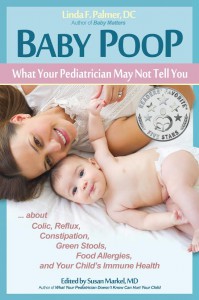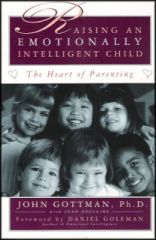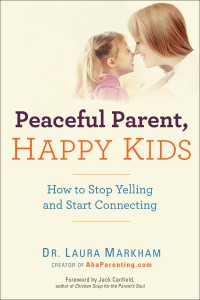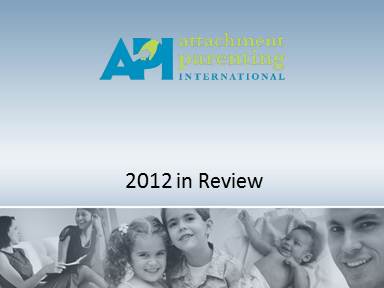 Longtime Attachment Parenting International (API) supporter, Linda Folden Palmer, DC, announces her latest book, Baby Poop.
Longtime Attachment Parenting International (API) supporter, Linda Folden Palmer, DC, announces her latest book, Baby Poop.
API: Tells us about Baby Poop.
Linda: Babies cannot tell us what symptoms they are feeling or where they are hurting. For the most part, we get smiles or cries, and we get poop. The color, consistency and frequency of a baby’s poop can provide all kinds of diagnostic clues to the child’s well-being.
My book discusses the impacts of many factors on the establishment and maintenance of baby’s flora, describes what kind of poops parent can expect at different ages and diets, explores issues of early weight gain and presents valuable preemie feeding evidence. The book also informs about caring for colic and reflux, and discovering and treating food sensitivities. Current newborn jaundice treatments are frequently contrary to the best research findings. I also provide plenty of information on dealing with constipation and withholding.
There’s more to caring for a sick baby than the 10-minute visit with the doctor. Baby Poop helps parents to know when baby is sick and provides evidence-based care practices for supportive care. I present the science about the use of various over-the-counter drugs with infants and demonstrate the risks attendant with prescribed antibiotics and antacids.
What’s the best way to help a baby with a little gastrointestinal (GI) virus to feel better? Snuggles, empathy and affection, along with good hydration.
There’s much more to be found in Baby Poop.
API: What inspired you to write this book?
Linda: My first book, Baby Matters, became highly popular, and I received many letters and provided many consultations as a result. While Baby Matters (now in its 3rd edition as The Baby Bond) was chiefly intended to present the scientific evidence that supports Attachment Parenting practices, this brings in the topics of feeding, food sensitivities and other infant health issues.
I came to realize that a bulk of questions that I received from parents evolved around infant stooling symptoms and challenges. I also realized that this was an area where parents seemed to be receiving the least amount of good attention from their pediatricians.
Parents have great intuition to know when something is off, but had nowhere to turn for good answers. Besides invasive tests and frequent prescriptions for marginally appropriate medications, parents were not receiving truly helpful assistance toward optimizing the health of their babies.
Having found my GI course in chiropractic school to be quite inspiring, having learned from the many families I provided health consults with over the years, being married to a man with Crohn’s disease whom we keep asymptomatic without drugs, and giving birth to one of the most poop-challenged children I’ve known, I had the background and drive to bring the evidence and my gained knowledge together in one useful text.
API: How will this book benefit other families?
Linda: To me, a big part of Attachment Parenting is seeking to provide the best comfort possible for a baby. Beyond this, taking efforts to optimize a child’s health provides future comfort via reduction in future diseases.
Rather than the common advice to parents to just tolerate colicky cries and to medicate reflux or diarrhea symptoms, Baby Poop gives parents the tools to get to the bottom of such conditions and heal them. I bring the current science on reducing risks for and treating autism. Parents also gain the tools to recognize many health conditions long before they may have otherwise become medically acknowledged.
API: Is there any special message you have for parents of infants about the long-term importance of the gut microbiome?
Linda: Microbiome research is huge today — and it’s about time! It’s incredible what long-term gut health affects can result from a choice over home or hospital birth, small or large facility, scheduled C-section or natural birth, immediate or delayed latch to breast, formula supplements or not, or from supplementing preemies with artificial versus human milk-derived fortifiers.
Even if everything goes as planned toward seeking a healthier flora establishment, over-prescription of antibiotic drugs to young children can set the microbiome health back for years or even for life.
Gut health not only affects the number of GI infections a child endures, but it provides the basis for the absorption of nutrients, for inflammation control and for immune system effectiveness. It even affects the brain. Risks for the later development of asthma, autism, autoimmune disorders, diabetes and inflammatory bowel disease are all impacted by early gut health.
There are so many instances where parenting choices can have strong influences on the future health of a child. There are also many ways in which parents can make up for the effects from circumstances that were beyond their control.
API: What are your views of API? How does your book fit within API’s mission statement?
Linda: I found my first Attachment Parenting support group 20 years ago when I was struggling with many conflicts between my own parenting instincts and the baby care advice directed at me from so many others. API helped to give me the permission I needed to follow my heart when it came to caring affectionately for my baby. Back then, following evidence-based natural parenting principles was in great conflict with mainstream pediatric advice. It still is today — although to a lesser degree thanks in large part to the work of API.
Baby Poop gives parents the science-based tools they need to make their own educated decisions about their baby’s feeding and basic healthcare, in effort to optimize the long-term health, and thus happiness, of their child.
API: Is there anything else you’d like to share?
Linda: In researching all the various aspects of infant care surrounding infant gut health, I learned all over again that the science supports natural parenting choices.
API: Where can people find more information about your book or your work?
Linda: I offer many infant health and parenting articles on my website at BabyReference.com. Also follow my Facebook pages: Baby Poop and The Baby Bond: Baby Matters.
Baby Poop is available on Amazon or wherever books are sold.
A limited number of books will soon be available for purchase in the API Store.






 Q: Why doesn’t my partner love me a better?
Q: Why doesn’t my partner love me a better? A study to be published in the March issue of Behavior Therapy, “Generalized Anxiety Disorder: Connections with Self-Reported Attachment,” credits secure parent-child attachment in lessening the risk of that child eventually developing a severe anxiety disorder as an adult.
A study to be published in the March issue of Behavior Therapy, “Generalized Anxiety Disorder: Connections with Self-Reported Attachment,” credits secure parent-child attachment in lessening the risk of that child eventually developing a severe anxiety disorder as an adult.